Keynote Speakers (Alphabetize by Last Name)
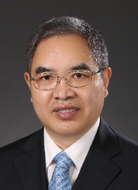
|
|
Prof.
Pingyi Fan |
Dr. Pingyi Fan is a professor of the Department of
Electronic Engineering of Tsinghua University. He received Ph.D. degree at the
Department of Electronic Engineering of Tsinghua University in 1994. From 1997 to
1999, he visited the Hong Kong University of Science and Technology and the
University of Delaware in the United States. He also visited many universities and
research institutes in the United States, Europe, Japan, Hong Kong and Singapore. He
has obtained many research grants, including national 973 Project, 863 Project,
mobile special project and the key R&D program, national natural funds and
international cooperation projects. He has published more than 190 SCI papers (more
than 130 IEEE journals), and 4 academic books. He also applied for more than 30
national invention patents, 5 international patents and. He won seven best paper
awards of international conferences, including IEEE ICC2020 and Globecom 2014, and
received the best paper award of IEEE TAOS Technical Committee in 2020, the
excellent editor award of IEEE TWC (2009), etc. He has served as the editorial board
member of several Journals, including IEEE and MDPI. He is currently the editorial
board member of Open Journal of Mathematical Sciences, the deputy director of China
Information Theory society, the co-chair of China's 6G-ANA TG4, and the chairman of
Network and Communication Technology Committee of IEEE ChinaSIP. His current
research interests are in 6G wireless communication network and machine learning,
semantic information theory and generalized information theory, big data processing
theory, intelligent network and system detection, etc.

|
|
Prof. David Greenhalgh |
Professor David Greenhalgh gained a PhD from the University of Cambridge in 1984 and worked at Imperial College, London from 1984 to 1986. He also has a first class Honours degree in Mathematics and a distinction in Part III Mathematics. He is am currently a member of the Population Modelling and Epidemiology Research Group at Strathclyde and has been a member of staff at Strathclyde in the Departments of Mathematics, Statistics and Modelling Science and Mathematics and Statistics since 1986. He is currently (since 2017) a full professor in the Department of Mathematics and Statistics, University of Strathclyde, Glasgow, UK, Postgraduate Director (Mathematics and Statistics) at Strathclyde and also Associate Editor of Journal of Biological Systems. He has published over 110 publications in international refereed journals, supervised over 20 MPhil and PhD research students and been on the editorial board of eighteen international journals. In 2015 he was awarded a two year (2015-2017) Leverhulme Trust Research Fellowship grant (50K RF-2015-88) as PI to study mathematical modelling of vaccination against dengue. He has also been involved in collaboration with Malaysia to mathematically model a mosquito trap to control dengue and won a 187K grant from the Newton Fund to do this in 2016. His main research interests are in mathematical and statistical epidemiology but he has also done some work in genetic algorithms and signal and image processing.
Title: Convergence Criteria for Genetic Algorithms
Abstract: In this talk we discuss convergence properties for genetic algorithms. By looking at the effect of mutation on convergence, we show that by running the genetic algorithm for a sufficiently long time we can guarantee convergence to a global optimum with any specified level of confidence. We obtain an upper bound for the number of iterations necessary to ensure this, which improves previous results. Our upper bound decreases as the population size increases. We produce examples to show that in some cases this upper bound is asymptotically optimal for large population sizes. Finally we discuss implications of these results for optimal coding of genetic algorithms.

|
|
Prof. Jianbin Qiu |
Jianbin Qiu received the B.Eng. and Ph.D. degrees in Mechanical and Electrical Engineering from the University of Science and Technology of China, Hefei, China, in 2004 and 2009, respectively. He also received the Ph.D. degree in Mechatronics Engineering from the City University of Hong Kong, Kowloon, Hong Kong, in 2009.
He is currently a Full Professor at the School of Astronautics, Harbin Institute of Technology, Harbin, China. He was an Alexander von Humboldt Research Fellow at the Institute for Automatic Control and Complex Systems, University of Duisburg-Essen, Duisburg, Germany. His current research interests include intelligent and hybrid control systems, signal processing, and robotics.
Prof. Qiu is a Fellow of IEEE and serves as the chair of the IEEE Industrial Electronics Society Harbin Chapter, China. He is an Associate Editor of IEEE Transactions on Fuzzy Systems, IEEE Transactions on Cybernetics, and IEEE Transactions on Industrial Informatics.
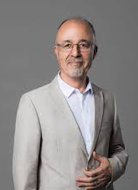
|
|
Prof. Mohamad Sawan |
Mohamad Sawan is Chair Professor in Westlake University, Hangzhou, China, and Emeritus Professor in Polytechnique Montreal, Canada. He is founder and director of the Cutting-Edge Net of Biomedical Research And INnovation (CenBRAIN) in Westlake University, Hangzhou, China. He received the Ph.D. degree from University of Sherbrooke, Canada. Dr. Sawan research activities are bridging micro/nano electronics with biomedical engineering to introduce smart medical devices dedicated to improving the quality of human life. For almost three decades, he was focusing on building wearable and wirelessly powered implantable microsystems to restore lost sensory abilities and mitigate malfunctioning organs through monitoring healthcare parameters (signals, images, pressure, etc) and neuromuscular electrical/optic stimulation. He is Co-Founder, Associate Editor and was Editor-in-Chief of the IEEE Transactions on Biomedical Circuits and Systems (2016-2019). He is founder of the Polystim Neurotech Laboratory, and Co-founder of the International IEEE-NEWCAS and the International IEEE-BioCAS Conference. He was General Chair of both the 2016 IEEE International Symposium on Circuits and Systems, and the 2020 IEEE International Medicine, Biology and Engineering Conference (EMBC). He was awarded the Canada Research Chair in Smart Medical Devices (2001-2015), and was leading the Microsystems Strategic Alliance of Quebec, Canada (1999-2018). Dr. Sawan published more than 1000 peer reviewed papers, three books, 13 book chapters, and 12 patents and 17 other pending patents. He received several awards, among them the Zhejiang Westlake Friendship Award, the Qianjiang Friendship Ambassador Award, the Shanghai International Collaboration Award, the Queen Elizabeth II Golden Jubilee Medal, and the Medal of Merit from the President of Lebanon. Dr. Sawan is Fellow of the IEEE, Fellow of the Canadian Academy of Engineering, Fellow of the Engineering Institutes of Canada, and “Officer” of the National Order of Quebec.

|
|
Prof.
Jiangzhou Wang |
Jiangzhou Wang (IEEE Fellow) is a Professor at the
University of Kent, U.K. His research interest is in mobile communications. He has
published over 400 papers and 4 books. He was a recipient of the 2022 IEEE
Communications Society Leonard G. Abraham Prize and the 2012 IEEE Globecom Best Paper
Award. Professor Wang is a Fellow of the Royal Academy of Engineering, U.K., Fellow of
the IEEE, and Fellow of the IET. He was the Technical Program Chair of the 2019 IEEE
International Conference on Communications (ICC2019), Shanghai, the Executive Chair of
the IEEE ICC2015, London, and the Technical Program Chair of the IEEE WCNC2013.
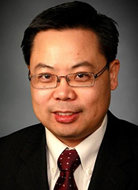
|
|
Prof. Xianbin Wang |
Dr. Xianbin Wang is a Professor and a Tier-1 Canada Research Chair at Western University, Canada. His current research interests include 5G/6G technologies, Internet of Things, communications security, machine learning, and intelligent communications. He has more than 500 highly cited journals and conference papers, in addition to over 30 granted and pending patents and several standard contributions.
Professor Wang is a Fellow of IEEE, Fellow of the Canadian Academy of Engineering and a Fellow of the Engineering Institute of Canada. He has received many prestigious awards and recognitions, including the IEEE Canada R. A. Fessenden Award, Canada Research Chair, Engineering Research Excellence Award at Western University, Canadian Federal Government Public Service Award, Ontario Early Researcher Award, and nine Best Paper Awards. He was involved in many IEEE conferences, including GLOBECOM, ICC, VTC, PIMRC, WCNC, CCECE, and CWIT, in different roles, such as General Chair, TPC Chair, Symposium Chair, Tutorial Instructor, Track Chair, Session Chair, and Keynote Speaker. He serves/has served as the Editor-in-Chief, Associate Editor-in-Chief, and editor/associate editor for over ten journals. He was the Chair of the IEEE ComSoc Signal Processing and Computing for Communications (SPCC) Technical Committee and is currently serving as the Central Area Chair for IEEE Canada.
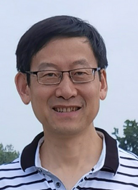
|
|
Prof.
Kun Yang |
Kun Yang received his PhD from the Department of Electronic & Electrical Engineering of University College London (UCL), UK. He is currently a Chair Professor in the School of Computer Science & Electronic Engineering, University of Essex, UK, leading the Network Convergence Laboratory (NCL). He is also an affiliated professor of Nanjing University, China. His main research interests include wireless networks and communications, future Internet and edge computing. In particular he is interested in energy aspects of future communication systems and AI for wireless. He has managed research projects funded by UK EPSRC, EU FP7/H2020, and industries. He has published 400+ papers and filed 20 patents. He serves on the editorial boards of a number of IEEE journals (e.g., IEEE ComMag, TNSE, TVT). He is a Deputy Editor-in-Chief of IET Smart Cities Journal. He has been a Judge of GSMA GLOMO Award at World Mobile Congress – Barcelona since 2019. He was a Distinguished Lecturer of IEEE ComSoc (2020-2021).
He is a Member of Academia Europaea (MAE), a Fellow of IEEE, a Fellow of IET and a Distinguished Member of ACM.
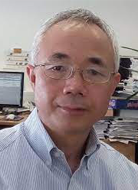
|
|
Prof. Lie-Liang Yang |
Lie-Liang Yang is the professor of Wireless Communications in the School of Electronics and Computer Science at the University of Southampton, UK. He received his MEng and PhD degrees in communications and electronics from Northern (Beijing) Jiaotong University, Beijing, China in 1991 and 1997, respectively, and his BEng degree in communications engineering from Shanghai TieDao University, Shanghai, China in 1988. He has research interest in wireless communications, wireless networks and signal processing for wireless communications, as well as molecular communications and nano-networks. On these research topics, he has graduated 35 PhD students and currently supervises 5 PhD students, and has also supervised 150+ master projects. He has published 400+ research papers in journals and conference proceedings, authored/co-authored four books and also published 10+ book chapters. The details about his research publications can be found at https://www.ecs.soton.ac.uk/people/llyang. He is a fellow of the IEEE, IET and the AAIA, and was a distinguished lecturer of the IEEE VTS. He served as an associate editor to various journals, and is currently a senior editor to the IEEE Access and a subject editor to the Electronics Letters. He also acted different roles for organization of conferences.
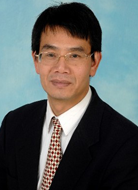
|
|
Prof. Shuanghua Yang |
Shuang-Hua YANG is currently the Head of Department of Computer Science at the University of Reading, the UK and the Director of Shenzhen Key Laboratory of Safety and Security for Next Generation of Industrial Internet, Southern University of Science and Technology (SUSTech), Shenzhen, China. His current research interests include cyber-physical system safety and security, Internet of Things. He is a Fellow of IET and a Fellow of InstMC, U.K. He is an Associate Editor of the IET Journal Cyber-Physical Systems Theory and applications. He received the B.S. degree in instrument and automation and the M.S. degree in process control from the China University of Petroleum (Huadong), Beijing, China, in 1983 and 1986, respectively, and the Ph.D. degree in intelligent systems from Zhejiang University, Hangzhou, China, in 1991. He was awarded DSc from Loughborough University in 2014 to recognize his academic contribution to wireless monitoring research.
